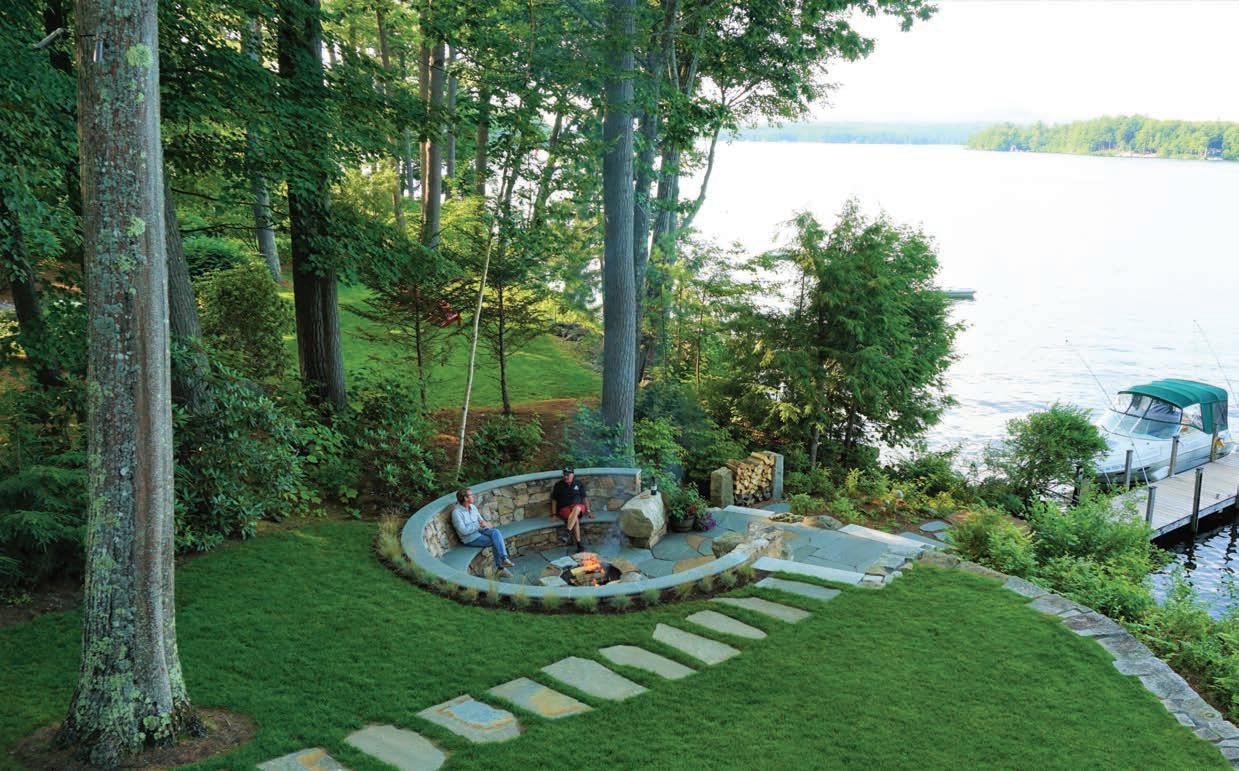
3 minute read
Heaven on Earth
By Hillary Nelson | Illustration by Carolyn Vibbert
My husband calls them New Hampshire potatoes, the hundreds of rocks we pick from our garden every spring, heaved to the surface by winter’s churn of frost and thaw. We’ve been planting here for twenty-five years. My in-laws turned over the same spot for fifty years before that. And before my in-laws, the Canterbury Shakers tilled this soil for a hundred years. You’d think the last New Hampshire potato would have been harvested by now. But no.
Our rocky garden tips southwest on what some people still call “Queer Hill.” The word “queer” in is used in the old-fashioned sense— meaning peculiar, eccentric—and pronounced, in these parts, “kaweah.” When and how the ridge where Canterbury Shaker Village sits came by this nickname isn’t recorded. My guess is it goes back to 1782, when most of the Baptists in Canterbury quit the church and switched over to The United Society of Believers (USB), a.k.a., The Shakers.
That year, Benjamin Witcher donated his farm just down the hill from where I live now to the USB and set up a utopian commune. Members handed over their children to be raised by the group, became celibate, espoused pacifism and equality of the sexes, eschewed personal property.
What earned them the name “Shakers” was their offering to God—religious dancing. Joyful, uninhibited, gripped by the spirit until you fall down kind of dancing. To the dancephobic Baptists, peculiar and eccentric, indeed.
The Shakers believed they could literally build heaven on earth. Hundreds of people left behind the hard life of the average person in nineteenth-century New Hampshire to join up. Pretty soon, there were three bustling, beautiful Shaker Villages right next to one another—the Church Family in the south, then the Middle Family and then the North Family.
Today, only the Church Family buildings are standing, except, that is, for our 1826 house. Once the Trustees’ Building of the North Family, our house is constructed of bricks made from local clay—a metaphorical material, someone once told me, a kind of Shaker joke: “In this building made of earth, we do business with people of the world.” Maybe all that brick was just too hard to pull down when the rest of the North Family was demolished. For that, I am grateful, because I dearly love this house, this place. Living here, walking this land, working on it, I feel I am in a conversation with someone I never met but know well. Someone I admire and respect. A kind of ancestor.
My world has a particular shape, built by people with a grand vision, and I am thankful every day for all of it. For the miles of stone walls that line the fields. For the road winding past our house out to the millponds and dams created with pure will and muscle. For the finished granite fence and gate posts. For the apple and pear trees—some so old, they have wide holes in their trunks that we can see right through. For the Apothecary and Eglantine roses that scent our yard. For the granite path that leads from the granite steps at our back door, and climbs the hill to nothing now but foundation stones covered by grass and a fine place to watch the sunset.
I am not a religious person. But in the evening, sometimes, my husband and I dance in the kitchen. Maybe not gripped-by-the-spirit kind of dancing. More like crank-up-the- Prince kind of dancing. Definitely joyful and uninhibited. An offering to those long-ago dancers. Our way of saying thank you, Shakers, for leaving us your heaven on earth. This lovely, beloved Queer Hill.
For more information about Canterbury Shaker Village, visit www.shakers.org.










